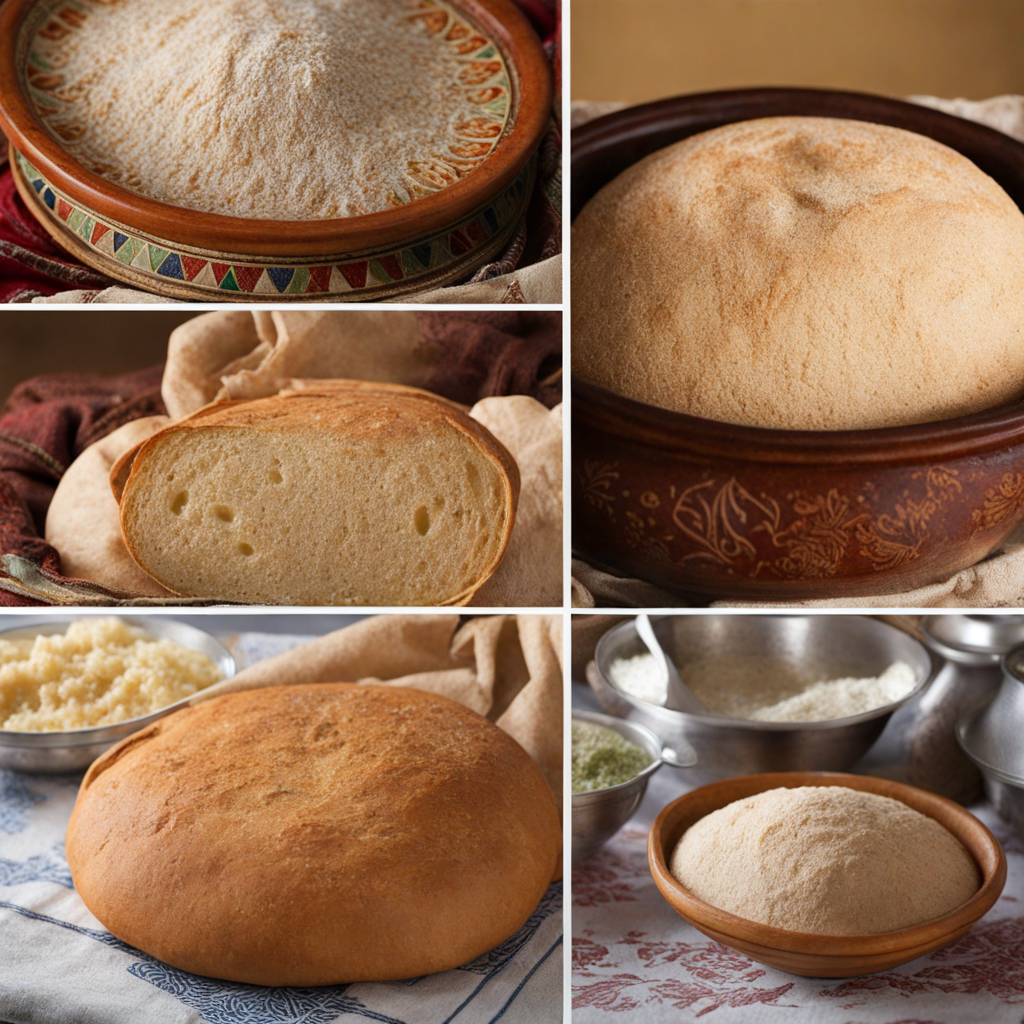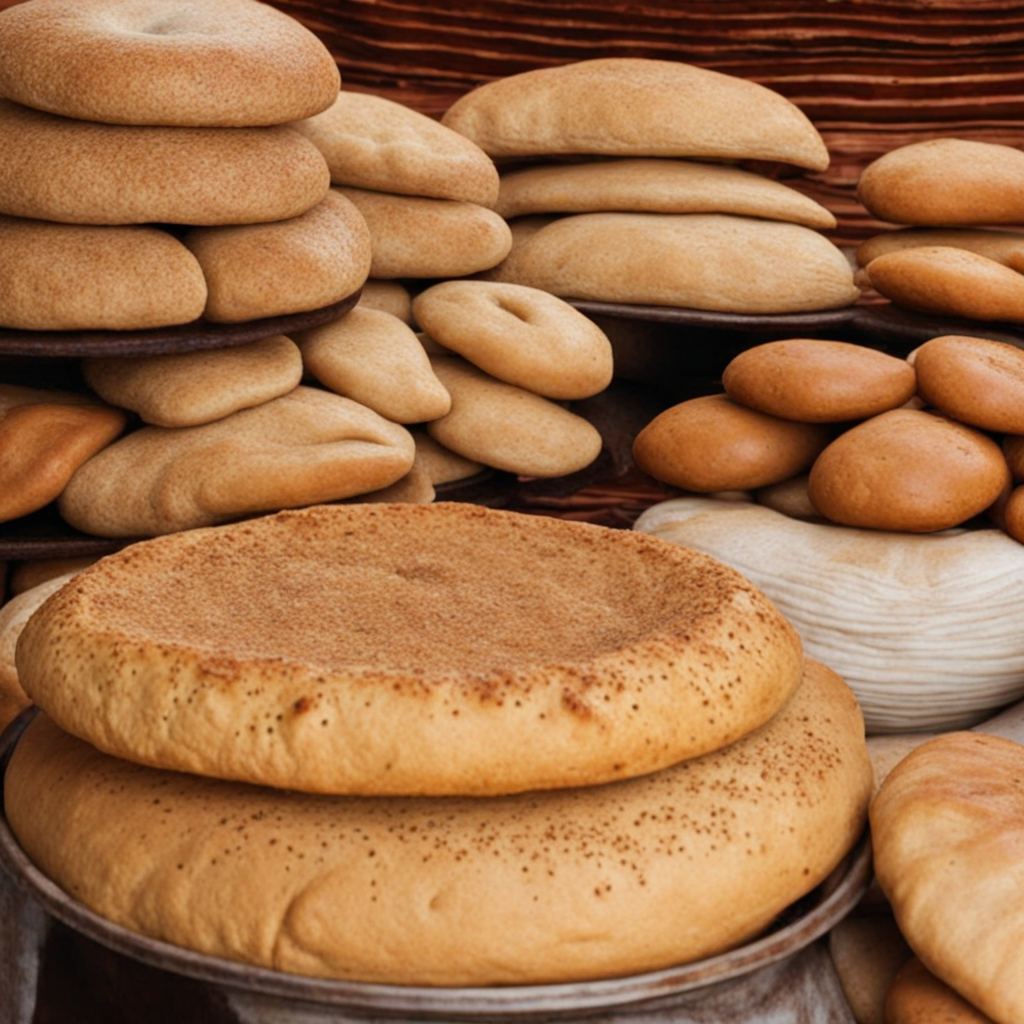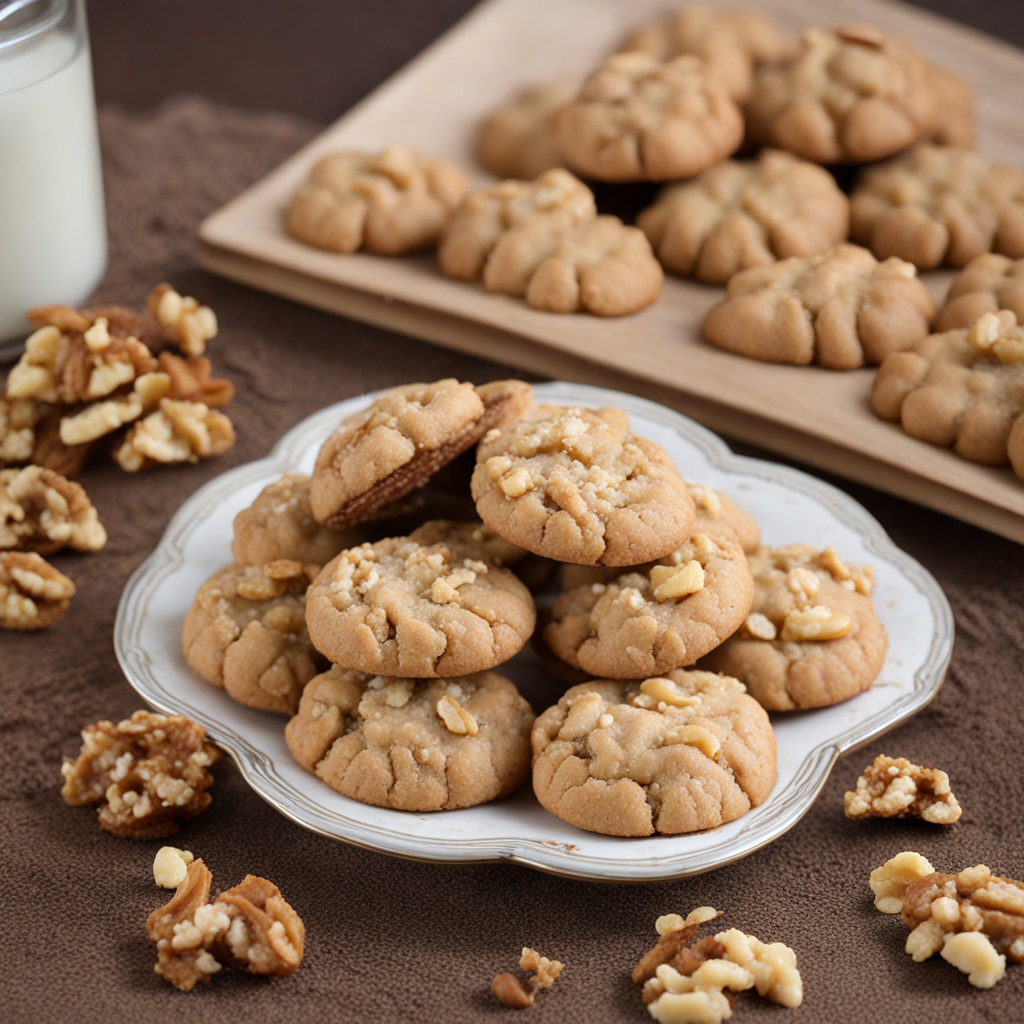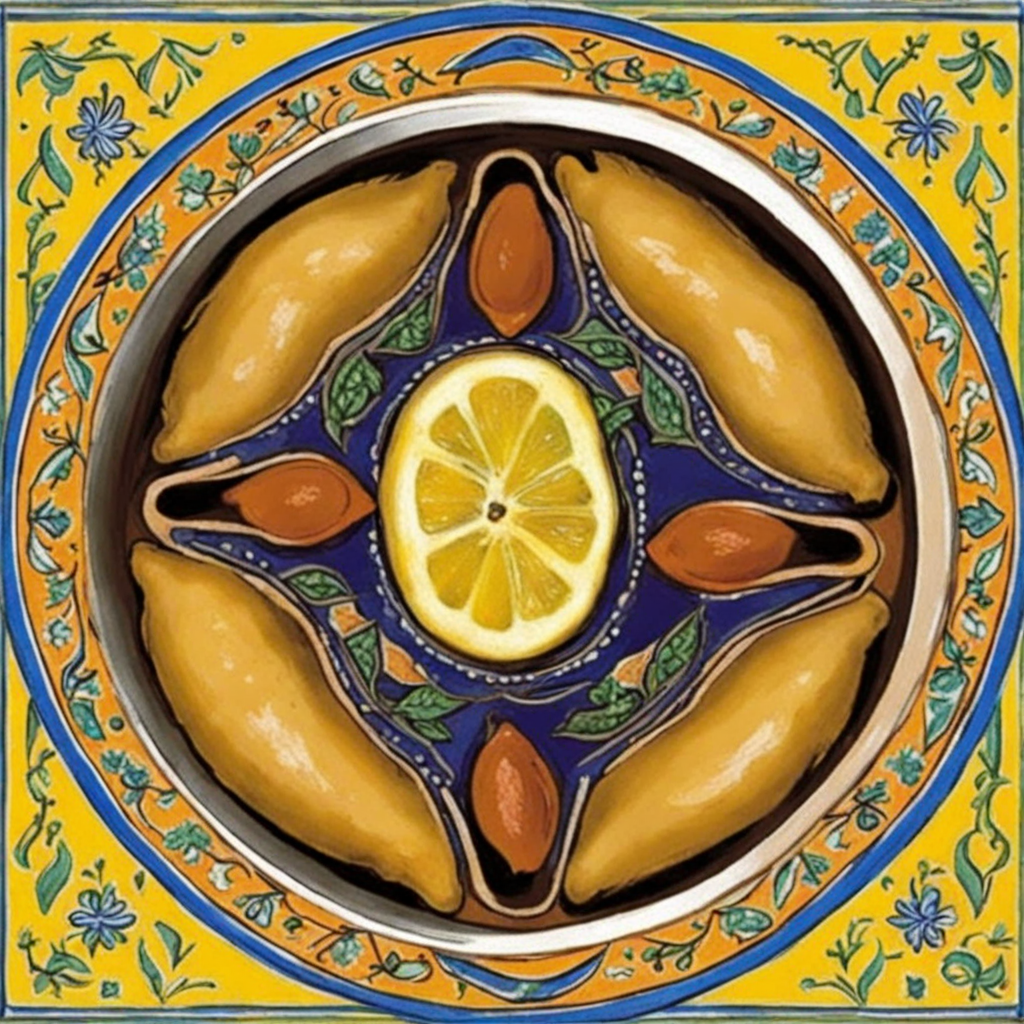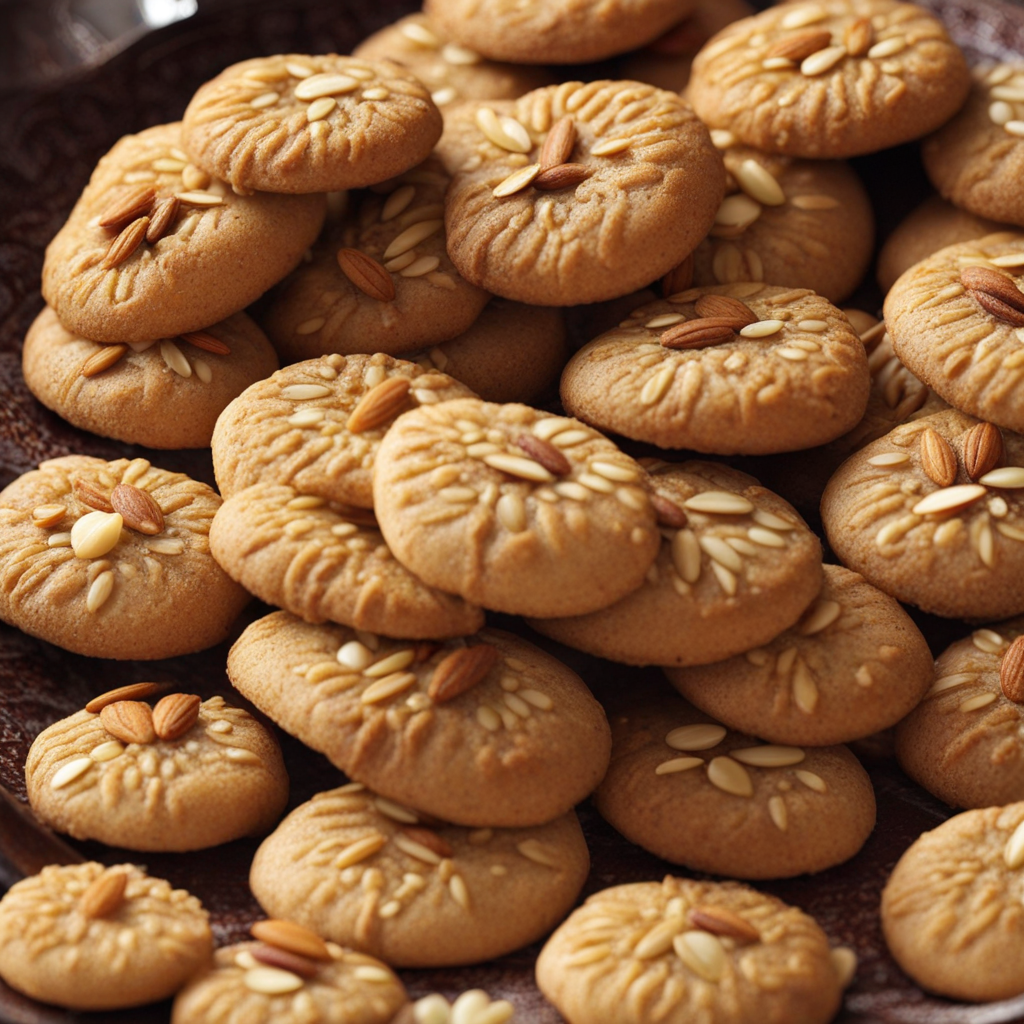Khobz
خبز, or Moroccan bread, is a staple food deeply embedded in the culinary culture of Morocco. It comes in various forms, with the most prominent being "khobz," a round, flat loaf that is commonly served in homes and restaurants alike. The history of Moroccan bread is as rich as the country's diverse culinary heritage, influenced by Berber, Arab, and Mediterranean traditions. Bread has been a fundamental part of Moroccan life for centuries, signifying hospitality and community. It is often the centerpiece of meals, served alongside tagines, stews, and salads, reflecting the Moroccan ethos of sharing and togetherness. The flavor profile of Moroccan خبز is subtly nuanced yet comforting. The bread typically has a slightly crusty exterior with a soft, fluffy interior that is perfect for sopping up rich sauces or enjoying with olive oil and spices. Depending on the specific recipe, it may carry hints of sweetness or nuttiness, particularly when made with whole wheat or barley flour. The bread is often enjoyed warm, and its aroma, enhanced by the toasting or baking process, is inviting and familiar to many Moroccans. Preparation of خبز is a communal affair, often taking place in a traditional communal oven known as a "fourn." The process begins with mixing and kneading the dough, which is primarily made from wheat flour, water, salt, and yeast. In some regions, semolina or whole grain flours are used, adding distinctive flavors and textures. Once the dough is well
How It Became This Dish
The Rich History of خبز (Khobz) in Morocco Origins of Khobz Khobz, the Moroccan bread, is more than just a staple food; it is a cultural cornerstone that has shaped the culinary landscape of the country. Its name, derived from the Arabic word for "bread," embodies the essence of sustenance in Moroccan society. The origins of Khobz can be traced back to ancient times, influenced by various civilizations that have inhabited the region, including the Berbers, Arabs, and later, the French colonialists. The Berbers, the indigenous people of North Africa, were among the first to cultivate grains such as barley and wheat, which formed the basis for their daily bread. They developed primitive methods of grinding grain and baking bread in communal ovens, a practice that continues to this day in many rural areas of Morocco. The introduction of wheat by the Arabs during their conquests in the 7th century enhanced the variety and texture of bread, leading to the development of Khobz as we know it today. Cultural Significance In Moroccan culture, Khobz is more than just food; it is a symbol of hospitality, community, and sharing. It is customary to serve bread with every meal, and it often takes center stage on the dining table. The act of breaking bread together is a gesture of camaraderie and unity, transcending social and economic barriers. Khobz is integral to various rituals and celebrations. For instance, during religious observances such as Ramadan, the bread takes on a special significance as families gather to break their fast at sunset. It is often accompanied by traditional dishes such as tagines and stews, allowing for a communal dining experience that fosters connections among family and friends. In Moroccan households, particularly in rural areas, the preparation of Khobz is a communal affair. Women traditionally take on the role of bread makers, gathering ingredients and preparing the dough, often in the company of neighbors or family members. This practice not only strengthens bonds among women but also preserves the age-old techniques and recipes passed down through generations. Varieties of Khobz Khobz comes in many forms, reflecting the diverse landscapes and cultures within Morocco. The most common type is the round, flat loaf made from wheat flour, water, salt, and yeast. However, variations exist depending on the region. For example, in the coastal areas, bakers often incorporate semolina into the dough, resulting in a denser texture. In the mountainous regions, where barley is more prevalent, Khobz made from barley flour is more common. Another popular variation is "Khobz Beldi," which translates to "traditional bread." This bread is typically made with whole wheat flour and is characterized by its rustic appearance and hearty flavor. Khobz Beldi is often baked in traditional clay ovens known as "fourn," which impart a unique smokiness to the bread. The Baking Process The baking of Khobz is an art form in itself. Traditional methods involve mixing flour with water, salt, and yeast to create a dough, which is then kneaded until smooth. After allowing the dough to rise, it is shaped into round loaves and left to rest before baking. Many Moroccans still prefer the communal ovens, where several loaves are baked at once, creating a social atmosphere as neighbors gather to share tips and stories. In urban settings, the introduction of modern bakeries has led to the commercialization of Khobz, yet many families still cherish the traditional methods. The aroma of freshly baked bread wafting through the streets of Moroccan cities is a beloved aspect of daily life, often leading people to buy their daily bread from local bakeries rather than making it at home. Khobz in Contemporary Morocco As Morocco has evolved, so too has its relationship with Khobz. The globalization of food culture has introduced new ingredients and techniques, yet the fundamental role of bread in Moroccan society remains unchanged. Today, Khobz is often accompanied by a variety of spreads, cheeses, and olive oils, reflecting a blend of traditional and modern culinary influences. Moreover, the rise of health-conscious eating has led to innovations in Khobz recipes. Whole grain and organic options have emerged, catering to a growing demand for healthier alternatives. Bakeries are increasingly offering Khobz made with ancient grains or enriched with seeds and herbs, appealing to both locals and tourists seeking authentic yet wholesome experiences. Khobz and Globalization Morocco's geographical location at the crossroads of Europe, Africa, and the Middle East has made it a melting pot of cultures, and Khobz has traveled far beyond its borders. As Moroccan communities spread across the globe, so too did their culinary traditions. Today, Khobz is enjoyed in Moroccan restaurants worldwide, often served alongside other traditional dishes like couscous and tagine. This global appreciation has fostered a renewed interest in Moroccan cuisine, showcasing the versatility of Khobz. It is not just a side dish; it has become a canvas for culinary creativity. Chefs experiment with fillings, using Khobz as wraps for sandwiches or as a base for gourmet dishes, marrying traditional flavors with contemporary gastronomy. Conclusion The history of Khobz in Morocco is a testament to the resilience and adaptability of a culture that has thrived through centuries of change. From its ancient origins to its modern interpretations, Khobz remains a vital part of Moroccan identity. It encapsulates the spirit of community and hospitality, reflecting the values that have defined Moroccan society for generations. As Morocco continues to navigate the complexities of the modern world, Khobz stands firm as a link to the past, a bridge to the present, and a symbol of hope for the future. Each loaf tells a story, connecting people to their roots and to one another, making Khobz not just a food but a cherished tradition that nourishes the body and soul.
You may like
Discover local flavors from Morocco


